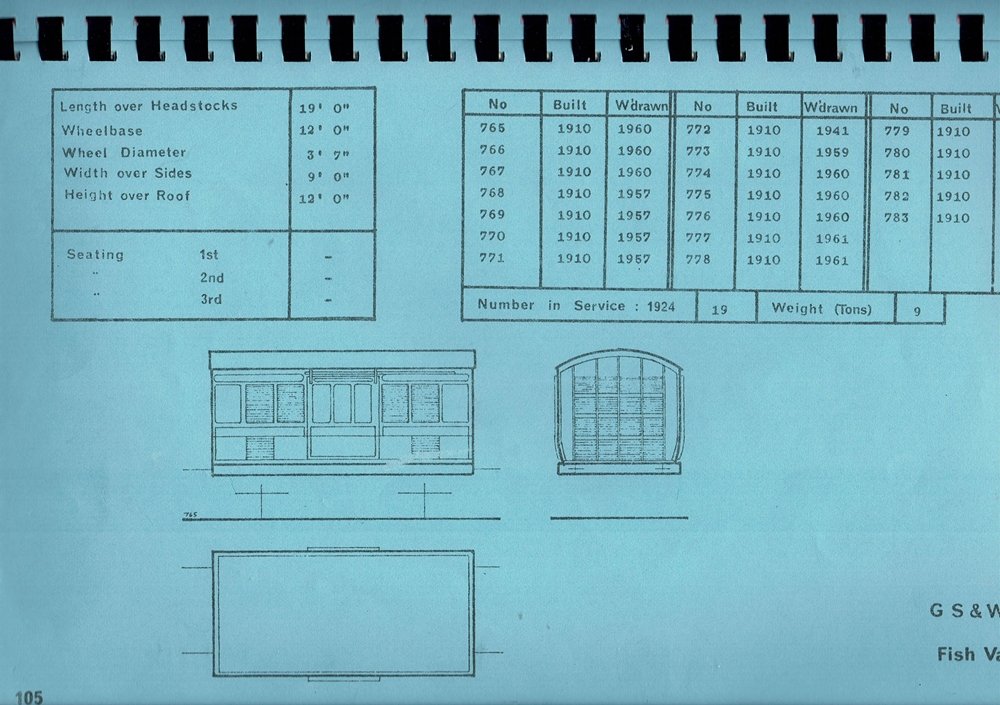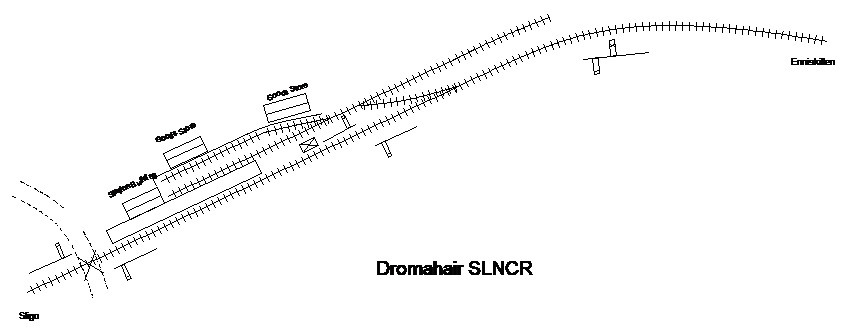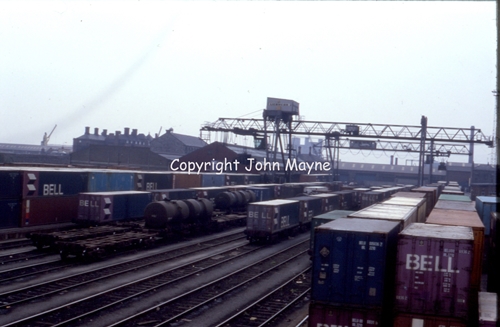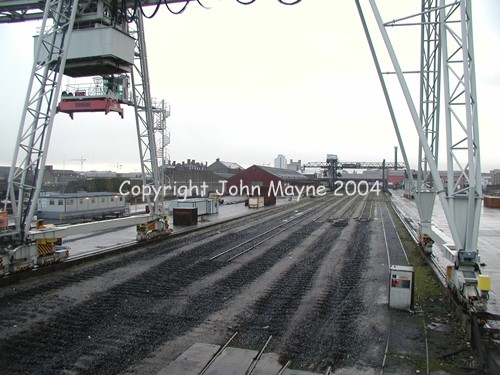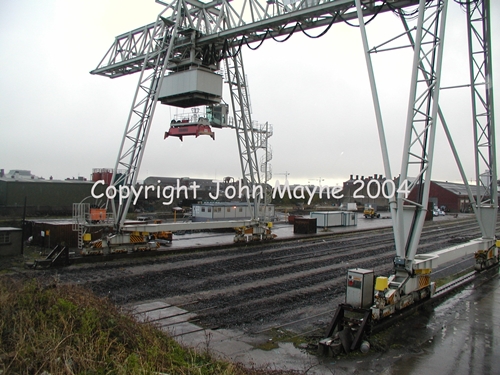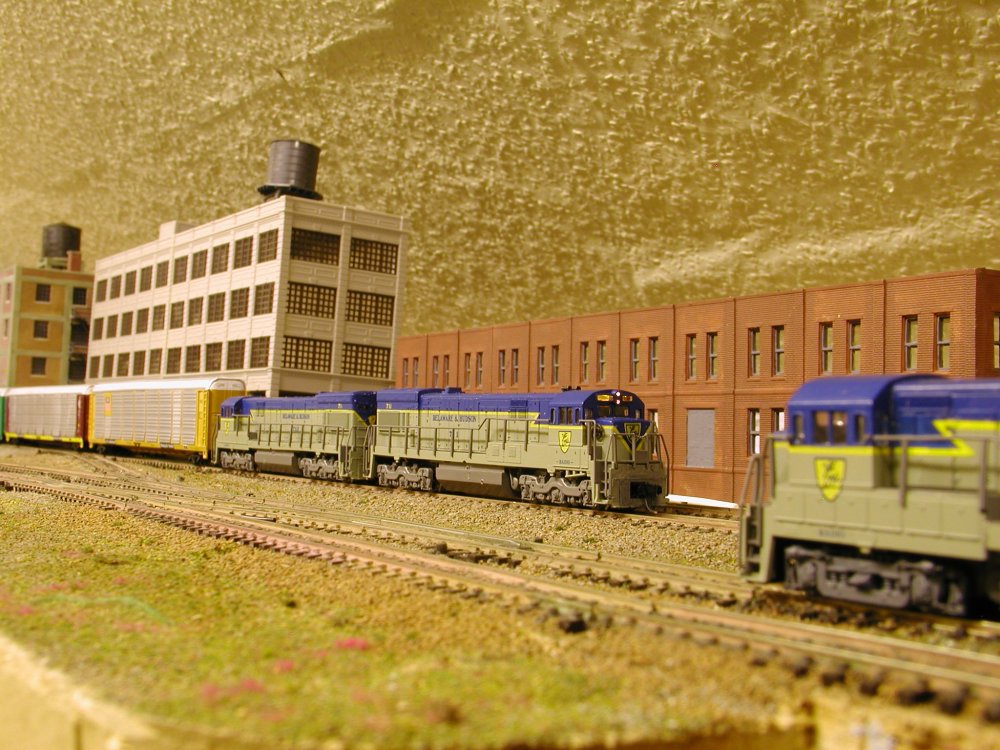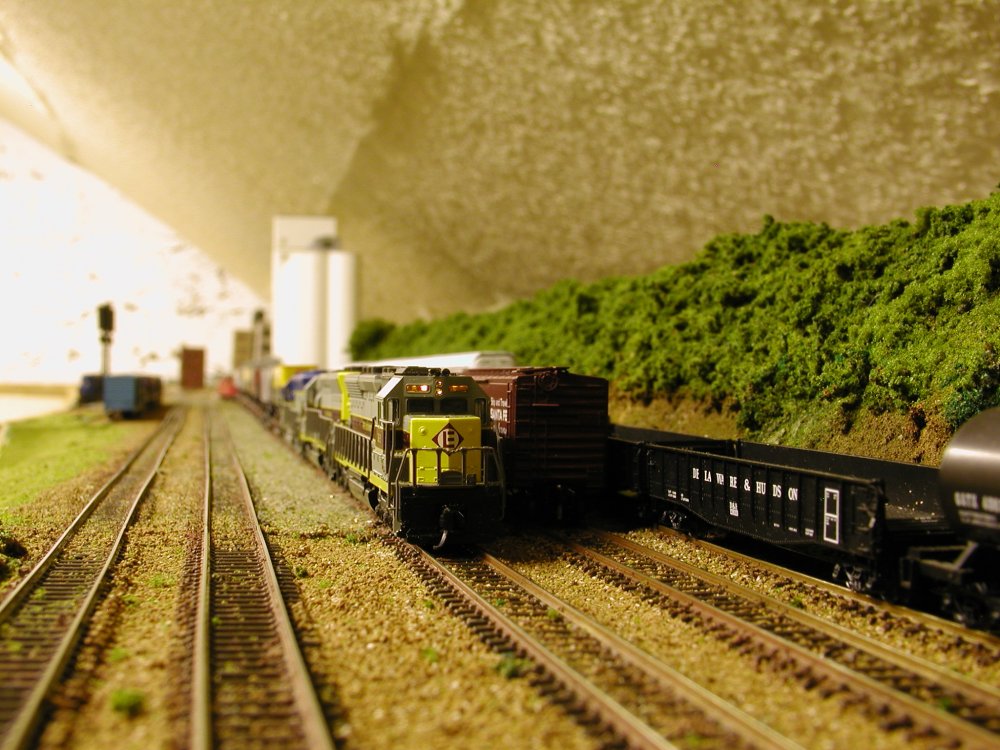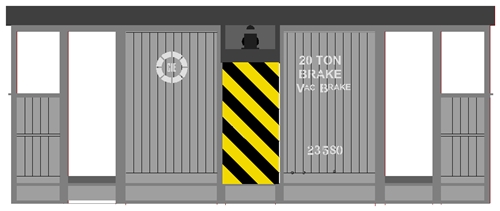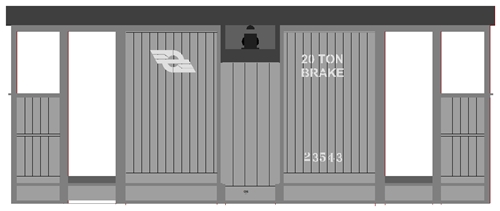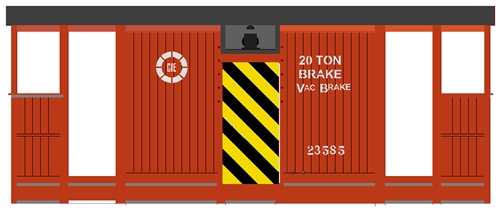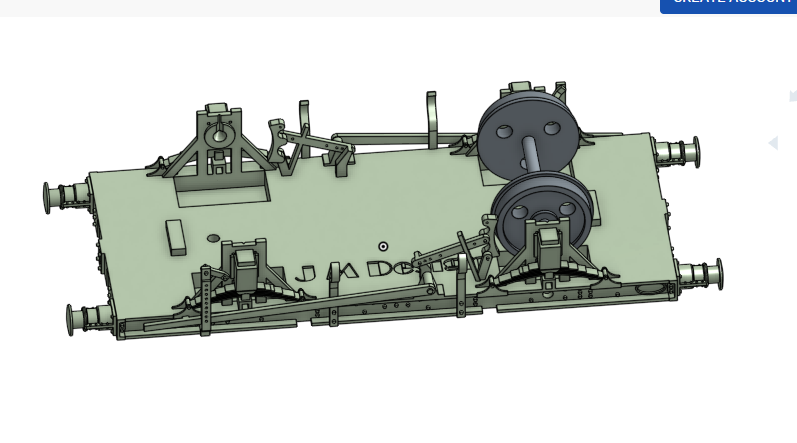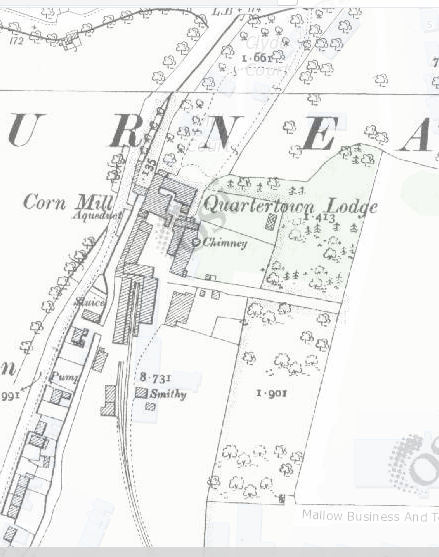-
Posts
4,878 -
Joined
-
Last visited
-
Days Won
119
Content Type
Profiles
Forums
Events
Gallery
Everything posted by Mayner
-
No 14 the Tullow Engine is a 52 Class or D17 the first Class of Irish express passenger 4-4-0 No 63 is one of the slightly larger and more powerful 60 Class or D14. The 52 Class(introduced 1883) with their small boiler and firebox may not have been up to sustained high speed running & appear to have been mainly used on secondary main line and branch line duties following the introduction of the 60 Class in 1885. The 60 Class had a reputation for speed and continued to be used on lighter main line duties on the Southern & DSER sections and piloting Dublin-Cork Expresses until replaced by railcars and diesel locos during the mid-late 1950s. The 52 Class had a reputation of high speed 60+mph running on Galway-Tuam trains during the 1950s, while 60 Class No94 was recorded at 74.5mph between Mourne Abbey & Mallow while piloting the Cork-Dublin portion of the Enterprise.
-
You did a nice job on the sand boxes they are difficult enough in 4mm. I chickened out and used lost cast casting from 3D printed masters for the tender tool & sand boxes on the 52 Class kit. The MGWR K Class appears to have shrunk down nicely to 2mm, it will be interesting to see how the foldup elements fold up so to speak.
-
Up to the introduction of the 8 Hour day locomotives were usually allocated to individual crews who took a lot of pride in their machine. To a degree wages were performance related with bonuses for fuel economy keeping "their loco" in top mechanical condition, drivers sometimes accompanying their loco through the works during heavy overhauls. Cleaners pay was also performance related on the BNCR(MR NCC) dependent on driver inspection and sign off that a loco was cleaned to an acceptable standard. There is a story in the Ballymena Lines of a narrow gauge driver whoes usual practice was to place the Cleaners Form against the side tank of a loco before signing it, then throw the signed form into the fire box (in front of the cleaner) if there was the least spec of dirt on the rear of the form.
-
Its possible your grandfather built the locomotive with outside cylinders for practical purposes. There may not have been enough space between the frames to build the model as a working two cylinder inside cylinder cylinder loco with working Stephensons motion, there are some things you cannot scale down.
-
A bit modern for an early 1900 layout the GSWR built 14 4w Motor/Fish Vans in 1907 with similar styling to the LNWR 6w CCT https://www.flickr.com/photos/31890193@N08/8901746841/ followed by 19 Fish Vans in 1910. The majority of the Motor/Fish Vans had gone by the late 1940s 4 surviving to the late 50s, most of the Fish Vans survived into the late 50s the last 2 withdrawn in 1961. Its possible that salted or smoked fish was transported in ventilated or ordinary vans (Covered wagons) mainly 14' variety before WW1. IRCH Standard wooden Vans predominate in photos of Valencia Harbour up to the closure in 1960s, with lots of barrels possibly for salted fish on the platform. The Motor/Fish was built to the same basic design without the lower set of louvres and with folding end doors like the LNWR CCT There is a 1950s lineside photo of an F6 hauled Cobh-Cork with what looks like an ex- GSWR Fish Van in the consist I am sure that you can think of a way of adding that "salty fishy" smell at exhibitions.
-

Belmond Hibernian - Luxury Touring Train
Mayner replied to Broithe's topic in What's happening on the network?
Railtours Ireland are planning to start the Emerald Pullman from July using a dedicate Intercity Railcar set staying overnight in 4 Star Hotels https://railtoursireland.com/ -
Is the CVR coach Worsley Works or did Andrew Mullins produce a 3mm scale version of the Branchlines CVR coaches I am tempted to build a CVR 0-4-2T & a 4w Passenger Brake in 4mm myself to go with a pair of Branchlines Coaches & a Horsebox I bought/built about 30 years ago.
-
More Angus & Galtemore's territory Dromahair on the SLNCR is another station where trains crossed using a siding as there was never a passing loop. The layout was very simple with a running line two sidings and 3 points. The SLNCR made up for the simple track layout with an unusual two armed signal at the Enniskillen end of the station to facilitate trains crossing. The upper arm acted as an Outer Home signal to allow trains to approach from the Enniskillen direction while another train was at the platform. The lower arm which had an X on the sighting bar acted as an Advanced Starting signal permitting a train to enter the Dromahair-Manorhamilton section, the lower arm also acted as a 'Shunt Back Signal" to allow east bound goods trains to reverse back into the yard for shunting or to cross trains. Although small the station appears to have been fairly busy with goods traffic with two goods stores, one of the stores was destroyed by fire in the early 1950s but quickly rebuilt. Florencecourt 5 miles from Enniskillen was simpler still a goods shed and loading bank served bay a single siding connected to the running line by a crossover in the middle, single storey station building, level crossing, signal box and up and down running signals. Although more or less in the middle of the countryside the station served a Fermanagh County Council depot and received bitumen in 45gal barrels until the line closed. Glenfarne along with being a Free State and Republic of Ireland customs post appears to have handled Leitrim County Council bitumen traffic the loading bank is covered in tar barrels in most 1950s photos. I guess tar barrels are a must for a 1920s to 60s Irish layout before Councils started receiving tar and bitumen in bulk road and rail tankers.
-
-
Dunsandle had a minimal layout in its final (post 1971) years a siding serving a goods shed and loading bank connected to the running line by a single point at the Loughrea end of the station. Curiously beet trains continued to operate on the branch for a number of weeks after the line closed to regular traffic in November 1975, there is a Walther McGrath video on the IRRS channel of a beet train shunting beet wagons at Dunsandle before continuing to Loughrea to run-round. http://eiretrains.com/Photo_Gallery/Railway Stations D/Dunsandle/IrishRailwayStations.html#Dunsandle_20100118_002_CC_JA.jpg Prior to 1971 the layout was more extensive with three points the goods shed and loading bank was served by a goods loop off the running line with a short siding off the loop at the Attymon end of the station, in MGWR days the siding apparently extended across a road into a ballast (gravel) pit. One of the oddities at Dunsandle was that locos and passenger stock were not allowed to pass the goods shed as the shed was built too close to the edge of the loading bank, an interesting rule to add to a shunting puzzle
-
The most significant "take away" from the Irish Times article is that the Dublin Port Company no longer want trains running into the port. Talk of a potential road transfer from East Wall Yard is a significant reversal in policy since the Port Company paid for the spur to the Ocean Pier and proposed extending the Alexandra Road Tramway into the Ro Ro Terminal. The article indicates that the Port Company even suggested that "cargo for the West could instead be shipped through Waterford, which also has a direct port link to Ballina". In a way keeping trains out of the Port helps the Government justify having spent €750m on a toll free HGV Port Tunnel.
-
The New Zealand GST (goods and sales tax) is a more accurate description of VAT as a sales and purchase tax. The recent international changes in how VAT/GST is collected is partially as a result of political pressure from retailers and locally based traders about business lost because of people importing small and large stuff from overseas without paying duty or GST. The former owner of the local equivalent of Mark's Models was literally fit to be tied because local railway modellers were increasingly buying their locos and stock from the United States and the UK. The move to international on-line platforms and electronic payments makes it easier & cost effective for governments to levy VAT/GST/Import sales tax on small purchases, than Customs Checks at the point of import. Basically before governments forced businesses like E-bay to collect VAT/GST on imports it was costing Customs services more to collect VAT on small purchases (<$100NZ) than it was earning in revenue despite various levies and charges.
-
Looks like a brake van at each end to simplify reversing a Drogheda-Cabra or possibly Cork bulk cement train at the Boston Yard. Bulk Cement trains ran to the Boston Yard to change direction on weekends & public holidays when Church Rd cabin and the North Wall Yards were closed. CIE unions quickly agreed to guards riding on the loco on Liner Trains, it would not have been too pleasant being bumped around at 50mph in a 4w van in a cloud of cement dust. The 30T vans were all steel construction without insulation or sound deadening, the older 20T vans would have been quieter and better insulated with timber internal lining.
-
Its something people will have to learn to live with as the "e-bay" tax is driven by pressure from Governments internationally to plug "tax leakage" through international and domestic on-line sales. On line platforms like e-bay make it a lot more cost effective to collect vat and duty at the point of sale than Customs intercepting a package at the Border. The logical extension is for Governments to levy a sales tax on all financial or barter transactions between individuals within the state, cashless transactions make this a lot easier. In the good "old days" around 1975 while living in Dublin I had to pay duty and tax on a order of Irish railway books from the IRRS London Area. More recently I have had to pay duty and sales tax on second hand large scale locos and rolling stock bought from private individuals in the UK and United States. Buying locally was not an option and would have been a lot more expensive than paying the tax and duty(Electric trains are liable for duty in my part of the World)
-
The purpose of this post and survey is to establish the potential level of demand for each 'era"/style. The responses to the survey and this post indicate that there is a similar level of interest in the 1950s & 1970s version of the model (neck & neck) with the 1960s version trailing slightly (2 lengths) behind. Its possible that demand is fairly evenly split between "collector's" who want one of each type and between steam/transition era modellers who may have a OO Works J15 or ordered a Crossley A Class and post 1970s modellers who may have black and tan and Supertrain diesels. Thanks for your feedback and support.
-
American outline is probably a better option than British if you start modelling in N very large range of relatively inexpensive locos, stock and buildings from a large number of manufacturers including Atlas, Kato, Walthers, Intermountain and Micro trains, most DC locos are supplied DCC ready if you want to convert to DCC at a later stage. The scale gauge ratio is correct and perhaps most importantly the majority of American N Gauge locos and stock are fitted with knuckle couplers suitable for magnetic uncoupling. I found that I could get an American layout up and running very quickly, building 12" wide shelf modules based on the One Trak system which started as a self contained switching layout that was later incorporated into the main yard on an attic layout.
-
We achieved a milestone today with the first batch of Brake Vans primed and ready for painting and final assembly. Its planned to release the vans in 3 livery variations and we welcome feedback on prospective customer preferences. Link to our survey on https://www.surveymonkey.com/r/7596LJW 1. 23543 Dark Grey snail logo stencil lettering 1950s onwards 2. 23580 CIE wheel logo post 1963 light grey with warning stripes 3. 23583 CIE wheel logo post 1970? red oxide with warning stripes. The colours are approximate.
- 25 replies
-
- 11
-

-

-
Most likely problems on the ground within the Port slower turn-round of container through the port as a result of a combination of Covid and Customs examination of freight arriving from the UK. Loading and unloading a 36 TEU train takes time and a lot of space, while trucks can queue outside the deport and depart immediately they are loaded. Its possible that the decision to temporary suspend the IWT service was in response to pressure from the Health and Safety Authority, there were problems with 'congestion" in Alexandra Basin in the early 2000s separating cruise ship passengers from the ports freight operations and the HSA had to intervene. The rapid partial re-instatement of the service indicates that Coca Cola/IWT put considerable pressure on the Dublin Port Company perhaps diverting their traffic through another port. It will be interesting to see if Coca Cola and other companies divert more of their traffic through Waterford Port to achieve a quicker container turn-round than at Dublin Port. Re-locating the ports container operations into the most congested section of the port seems odd (rather than developing the rail served facility developed in the 1990s) especially when it was necessary to re-locate the Tara and Oil Jetties and the dredging of contaminated sludge to allow larger ships to use the basin.
-
The bearing tube and compensating beam arrangement was used in the locos built by Guy Williams for the Pendon Dartmoor and Vale of the White Horse layouts and is detailed in his book "The 4mm Engine". The Pendon locos appear to have been mainly built using hand tools cutting out the frames with a piercing saw and turning the tubular axle ends in a lathe before forming the axle slots with a needle file (tricky). Fitting compensation in a small loco is certainly worth while because of improved power pick up with all 6 wheels in contact with the rails at all times as opposed to the 3 legged stool effect with a rigid chassis.
-
The shortie (13-14') Cleaning up removing un-cured resin and the supporting structure is very labour intensive and a significant cost in SLA printing. The business that I use for prototyping was very reluctant to take on volume production due to the risk of a slender part being knocked over during the "build" and loosing a nights production. Both my suppliers use isopropyl for clean up, one uses a converted car painters mixing room with mechanical ventilation and intrinsically safe electrics for the clean up process. Some models are printed vertically or at an angle to improve strength and improve finish by reducing the layering effect and the cleaning up to one face. The wagon chassis were designed for 21mm gauge wheelsets, the brakevan steps were printed integral with the chassis to reinforce the w iron axlebox spring assembly, while we increased the thickness of the W irons on the IRCH wagon chassis. We learned a lot about the capabilities and limitations of the 3D printing process during the design of the Brake Van originally designed as a pattern for resin casting with a lot of individual parts, it went through several iterations before we arrived at the final design once it was established that resin casting was not a practical proposition, by contrast apart from missing some of the rivet detail we got it right first time with the IRCH open wagon.
-
We have examined the options for exporting DDTP to Ireland and the UK mainly to remove the uncertainty around price for high value orders. The main issues are that the DDTP shipping rates for small parcels are considerably higher than ordinary air parcel or international courier services and only one company operating an affordable DDTP service from NZ to the UK. There may not be much difference in total price in ordering duty unpaid and paying the vat and associated charges on arrival as ordering an item DDTP as the charges and fees are built into the DDTP shipping rate. From a practical point of view there is no additional labelling on a package to indicate that its sent DDTP, packages are kept separate from other mail and parcels sent in a separate DDTP mail bag from the customers premises to a internal airport and distributed from a "fulfilment center' in the country of arrival rather than being scanned by customs. The E-Bay Global Shipping Services and some Chinese shippers operate on the same principal, high value package arrives from the States or China with a local postmark and no customs declaration on the box.
-
We have successfully printed wagons chassis suitable for OO & 21mm gauge, though a rigid brass or compensated chassis with metal detail castings is likely to be a better option using S4 or EMF wheel standards. A brass chassis is likely to be freer running and more dimensionally stable than a 3D printed chassis. The main risk in printing a chassis is part breakage as many of the SLA resins are very brittle, particularly in cold weather. We originally considered resin casting for production version of the CIE Brake Van but settled on 3D printing as we were unable to find a business with vacuum resin casting capability as small scale manufacture has moved on to 3D printing. We overcome the brittleness problem for wagon chassis by using a resin with ABS properties and have printed the IRCH wagon chassis in one piece complete with brake gear, door springs and hopper operating gear something that would be extremely difficult to achieve using resin casting or plastic injection molding. I use a freelance designer with experience in 3D printing, local and Chinese 3D printing bureau as it would have taken a long time to develop adequate 3D modelling skills to design and print a 3D wagon and could not justify the expense (at this stage) of buying a SLA printer capable of volume production. The challenge from my perspective was finding a designer and a printing house prepared to push the boundaries on what could be achieved using 3D printing.
-
There is an article on the 1914 Donemana Derailment in the June 21 IRRS Journal. Class 5 2-6-4T Letterkenny de-railed and rolled over on the points as it entered the station with a passenger train from Foyle Road at speed. While speed appears to have been a factor the large outside frame 2-6-4Ts may have been less steady that the smaller inside frame 4-6-0Ts that were the mainstay of Donegal motive power up to the introduction of larger locos in the early 1900s. In the authors words "The passing loops at Donemana was subsequently removed and later those at Raphoe and Inver on the Strabane and Killybegs lines respectively, likely to be influenced by the events at Donemana" Being an 'economical' railway its likely that the CDRJC relied on hand signals for backing moves when crossing trains at stations without passing loops such as Inver, there are descriptions of passengers staying on the train in railcar days during shunting moves in places like Donegal and no doubt the smaller stations. An option for a layout for watching trains go bye with minimal pointwork is a remote junction between two single lines such as Challoch Junction between the Ayr-Stranraer Line and the Port Road in Scotland single set of points and a signalbox or several Junctions with remotely operated points and semaphore signals on the GSR & CIE system such as Clara & Banagher Junction, Colloney Junction. For a minimum space Irish Inglenook shunting layout "Webbs Mill" at Quarterstown would fit the bill with a compact footprint and interesting buildings which could be modelled in its original form as a Corn Mill or final years as a Bitumen Depot before closure in 1977. The siding appears to have been usually worked by the Mallow pilot engine, though Roadbinders may have had some form of improvised 'rail tractor" There s a photo of B151 shunting bitumen tanker s at the mill in the Feb 2019 IRRS Journal
-
Coca Cola uses rail primarily to reduce its costs under the European Carbon Trading Scheme as there was little difference in cost between using the IWT liner and road. Perhaps some of the traffic may be diverted through Waterford Port with the recently reinstated Ballina-Belview Liner An additional 25 trucks a day between Ballina and Dublin Port is fairly insignificant in terms of overall road usage or Ireland's carbon emissions..
-

WARNING! Yet more gloom to spoil your summer.
Mayner replied to Irishswissernie's topic in Letting off Steam
In New Zealand the timber processing industry is basically rationing timber supplies to construction, basically because the same companies cut "surplus" capacity during the 10 years following GFC and focused on exporting logs to China. The timber supply situation and the shortage of trades people is not exactly helping a housing availability and affordability crisis which is not dissimilar to Ireland's
.png.c363cdf5c3fb7955cd92a55eb6dbbae0.png)


